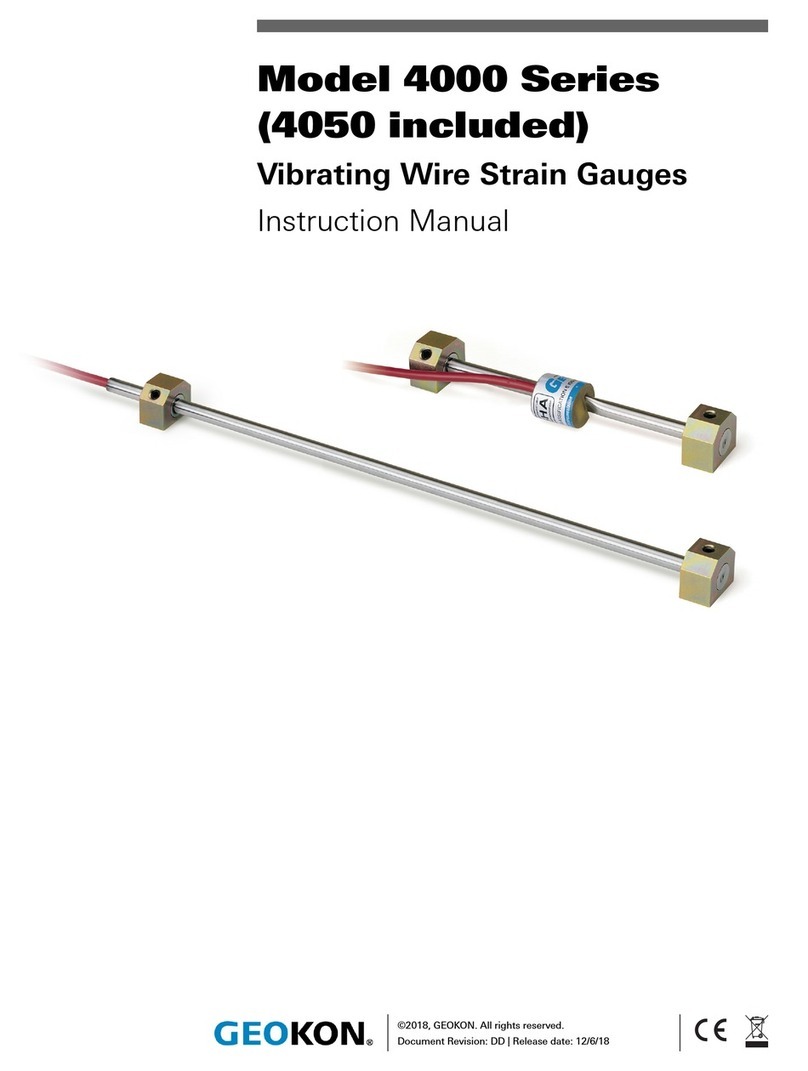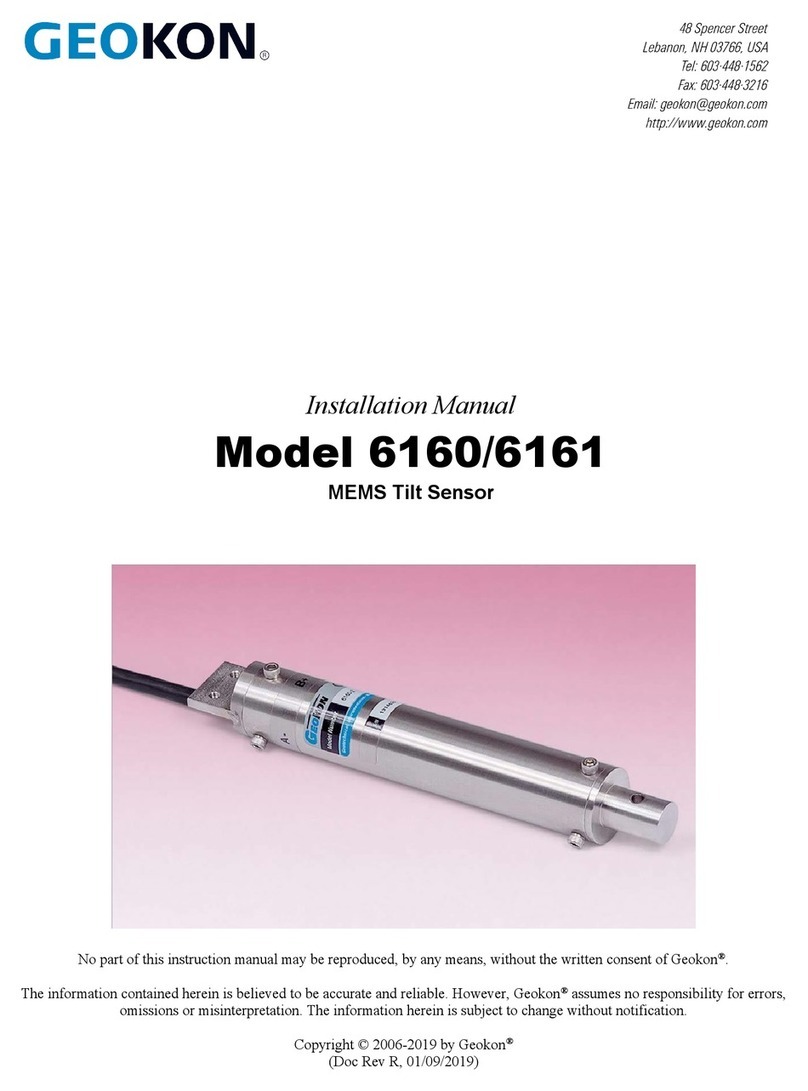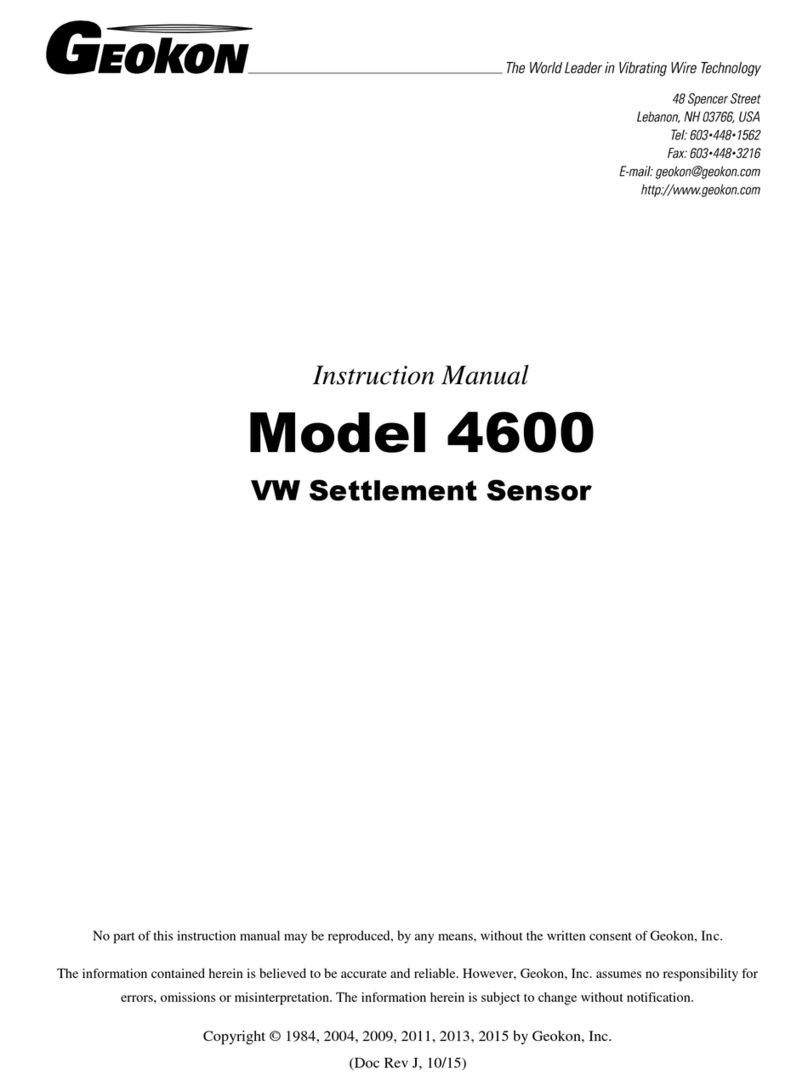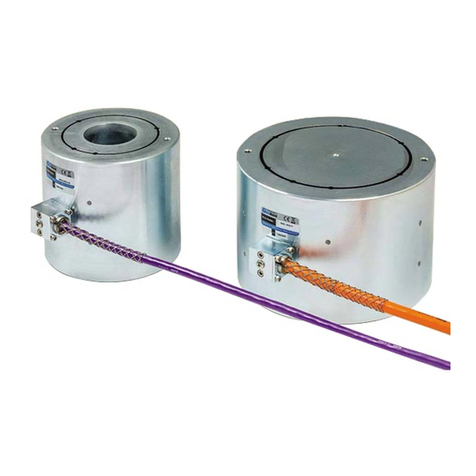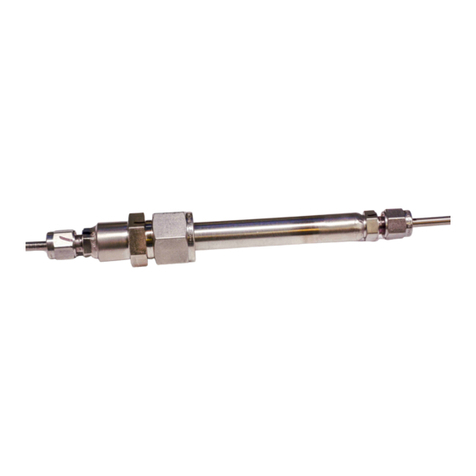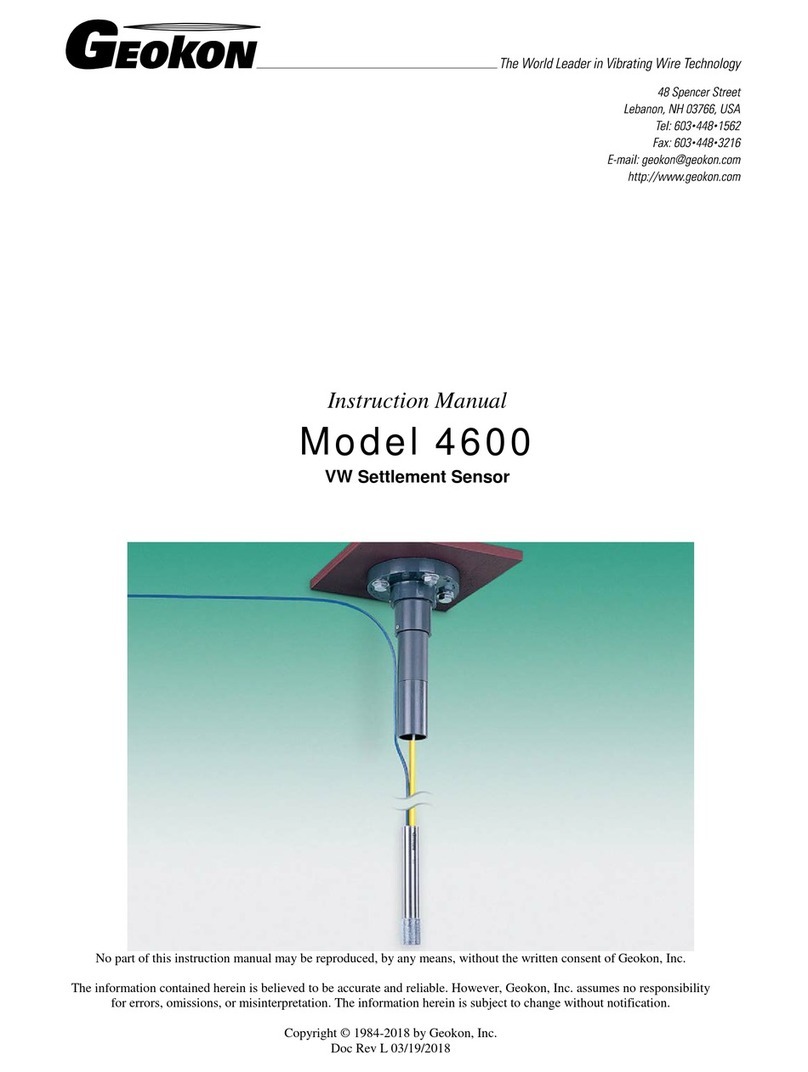
I
TABLE OF CONTENTS
1. INTRODUCTION............................................................................................................................................1
2. PRELIMINARY CHECKS......................................................................................................................3
2.1 USING A READOUT............................................................................................................................3
2.2 USING AN OHMMETER..................................................................................................................3
3. INSTRUMENT PROTECTION.........................................................................................................4
3.1 CABLE SPLICING AND TERMINATION............................................................................4
3.2 PROTECTION FROM MECHANICAL DAMAGE...........................................................4
3.2.1 SECURING CABLES..........................................................................................................................4
3.2.2 COVER PLATES ..................................................................................................................................4
3.3 CABLE AND CONNECTOR PROTECTION........................................................................6
3.4 PROTECTION FROM CORROSION........................................................................................6
3.5 PROTECTION FROM ELECTRICAL NOISE......................................................................7
3.6 PROTECTION FROM SUNLIGHT AND TEMPERATURE CHANGES .........7
3.7 LIGHTNING PROTECTION............................................................................................................7
4. GAUGE INSTALLATION.......................................................................................................................9
4.1 ADJUSTING THE GAUGE WIRE TENSION ....................................................................9
4.2 INSTALLING THE 4100/4150 VIA SPOT WELDING .............................................9
4.2.1 PREPARE THE SURFACE................................................................................................................9
4.2.2 SPOT WELD TEST STRIPS .............................................................................................................9
4.2.3 SPOT WELDING THE 4100 GAUGE ....................................................................................... 10
4.2.4 SPOT WELDING THE 4150 GAUGE ....................................................................................... 10
4.2.5 WELDING THE SECOND END PIECE..................................................................................... 11
4.2.6 INSTALLING COLLAR SHIMS................................................................................................... 11
4.2.7 INSTALLING THE PLUCKING COIL HOUSING (MODEL 4100 ONLY) ...................... 13
4.2.8 INSTALLING THE GAUGE COVER (MODEL 4150 ONLY).............................................. 13
4.2.9 SECURING THE 4150 GAUGE CABLE................................................................................... 13
4.3 INSTALLING THE 4100/4150 VIA EPOXY BONDING...................................... 13
4.4 INSTALLING THE 4151 STRAIN GAUGE.................................................................... 15
5. GAUGE LOCATION ................................................................................................................................16
5.1 END EFFECTS...................................................................................................................................... 16
5.2 WELDING EFFECTS........................................................................................................................ 16
5.3 BENDING MOMENTS................................................................................................................... 16
6. TAKING READINGS ............................................................................................................................. 20
6.1 STRAIN GAUGE READOUT POSITIONS ...................................................................... 20
